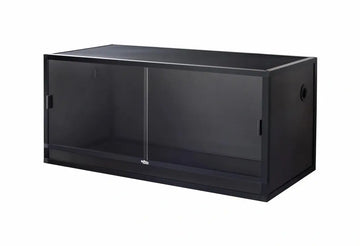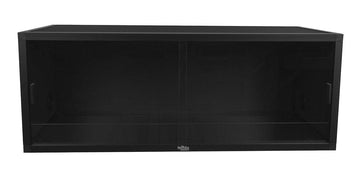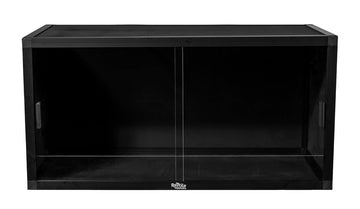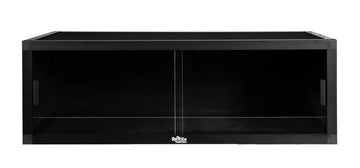What Are Feeder Crickets?
Feeder crickets are usually brown house crickets, Acheta domesticus. These are medium-sized, light brown-colored crickets with a 9-week life cycle. Due to the fact that they're cheap, readily available at most pet stores, and offer fairly balance nutrition, crickets are the most popular feeder insect in the US.
How to House Feeder Crickets
To optimize their short lifespan, feeder crickets need housing that provides adequate food, hydration, and standing room.
What size of cricket enclosure you will need depends on how many crickets you plan to keep. If you only need to keep one or two animals fed, you'll probably do fine with a 4" x 6" cricket keeper. If you need to keep three or more animals fed, you'll need 8" x 16"x 12", 20" x 10" x 12", or potentially something larger. This can be a cricket keeper, ventilated plastic tub, aquarium, or something else. Whichever you choose, make sure it has a secure lid — the last thing you want is escaped crickets.
To maximize available space, place pieces of egg crate flats inside the enclosure. This gives crickets places to stand without trampling each other. It's also a good idea to place empty toilet paper rolls on the floor of the enclosure, as this makes it much easier to grab the crickets you need at feeding time.
How to Feed Your Feeder Crickets
What you feed to your crickets is eventually what you feed to your pet, so it's important to make sure that your crickets are getting the highest quality food possible. The colorful "cricket food" cubes you see in pet stores work better for hydration than actual nutrition — instead, what you're looking for is a powdered grain cricket food. You can use chicken feed, cricket gutload formulas, or even make your own cricket chow if you find a good recipe.
Keeping Your Feeder Crickets Hydrated
Water bowls don't work well for crickets — they're more likely to drown in it than actually be able to drink from it. Instead, you can use cricket gel, polymer water crystals, a moist sponge, or fresh vegetables. Using fresh vegetables and fruits has the added benefit of putting extra vitamins in your crickets' diet.











